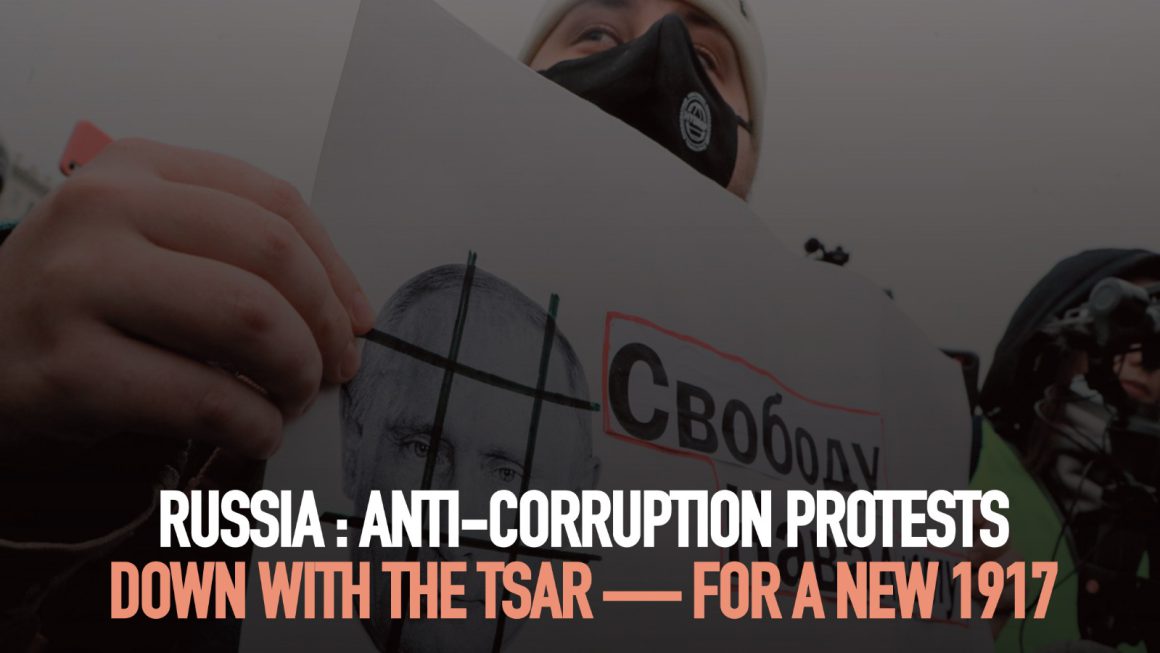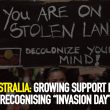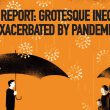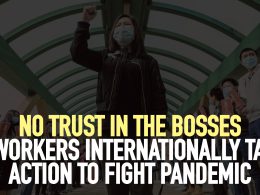Over 100 cities across nine time zones from Vladivostok in the Far East to Kaliningrad on the Baltic Coast, from Magadan and Murmansk through Yakutia, where the temperature was fifty degrees below zero, to sunny Sochi on the Black Sea and Sebastopol in Crimea, were shaken by protests today. Some involved hundreds of people, more often thousands. The centre of Nizhni-Novgorod was filled, in Vladivostok people crowded onto roofs to watch, and in scenes reminiscent of 1917 Nevski Prospect in St Petersburg was occupied by demonstrators. According to Reuters, there were forty thousand out in Moscow.
In Moscow, this protest was probably smaller, although much more youthful, than the 2012 Bolotny protests. Then the movement was largely limited to Moscow. But now, the estimations that this is the biggest protest in the post-Soviet Russia in the sense that there were major protests across the country are probably correct.
Protesters chanted ‘Free Navalny’, ‘Free all political prisoners’, ‘Putin is a thief’ and ‘Down with the Tsar’.
The authorities appear to be in panic. As the call to protest, made only about four days ago, began to spread University and School Heads issued warnings to students not to participate. The state TV stations, which youth hardly watch anymore, carried warnings from the Moscow Mayor and Head of police about the consequences of taking part in an illegal protest. As calls circulated in TikTok and other channels, the Consumer Protection [sic] Agency threatened to close them down. Propaganda was stepped up warning that anyone calling for ‘underage’ youth to participate would face criminal charges. One report showed a group of members of the right-wing reactionary Party “For Truth” being briefed by police to act as provocateurs and then escorted into the crowd.
Streets across the country were filled with ‘Cosmonauts’ — police dressed in riot gear ready to lay into the protests. Police violence was widespread. At the time of writing over 3,000 arrests have been made. This includes, according to the Trade Union of Journalists and Media Workers, over 50 journalists. In Saratov, a police vehicle speeding to deal with protesters collided with an ambulance, killing the patient inside. What was noticeable, in contrast to previous youth protests is that the demonstrators themselves not only resisted arrest but often went onto the offensive against police lines. One group of Cosmonauts in Moscow came under such a barrage of snowballs they had to run away. Later in the evening another group tried to storm a police station to release those who had been arrested.
The protest was called by Alexey Navalny, the opposition politician, who had been poisoned by agents of the Kremlin using the chemical agent Novichok. He had spent five months being treated in Germany before announcing he would return to Moscow. Last Sunday, minutes before his flight was due to land at the Moscow Vnukovo airport, where hundreds of his supporters were waiting, the flight was diverted to another airport. This caused protests from the pilots of other aircraft diverted as a result. One even filmed how his plane was left dangerously low on fuel.
Navalny was arrested at passport control, taken to a local police station where a kangaroo court with no lawyer sent him to prison for thirty days. He faces a possible thirteen-year prison sentence. On the next day, Navalny released a long film about corruption in Putin’s family, about a palace that he claimed had been built specially for Putin on the Black Sea at the cost of over a billion dollars. Within an hour the film had been seen by over a million, by the end of the week, fifty million views had been recorded.
Navalny is a businessman who started his political trajectory as a right wing, even far right liberal, who during the Bolotny protests of 2012 participated in the far-right Russian March. But he took an interesting turn a few years, moving away from his anti-immigrant right wing position. Although he is mainly known as a campaigner against the corruption of Russia’s ruling elite, he reflects, in a populist way, what clearly seems to be a left shift in the consciousness of Russian youth who are fed up with high education costs, precarious wages and the general stagnant and reactionary political position of the ruling elite, and the so-called ‘systematic parties’ including the communist party that maintain Putin in power. When Navalny declared earlier last year that he supported Bernie Sanders, the remainder of the liberal opposition rounded on him in horror.
The liberal pro-capitalist groups play no role in these protests and, unlike during the Bolotny protests, there is no significant far right presence. But the biggest weakness is that there is no significant left force with a sufficiently strong organization capable of giving a lead. The protests are announced by Navalny’s office and there is no organized structure that can reflect the wishes of those who participate. Although many are consciously protesting to demand the release of Alexey Navalny and other political prisoners, and there is clearly a mood against the current regime and corruption, so far the protests demonstrate an increasingly strong mood for change without demonstrating an understanding of exactly what change is needed.
At best, part of the Communist Party adopts a ‘neutral’ position, calling for the release of protesters, whilst the pro-Kremlin leaders of that party see such protests as part of a ‘hybrid war’ against Russia. Others, so-called Marxists both within Russia and internationally, see this protest as ‘petit-bourgeois’ or under ‘liberal leadership’, and until the masses understand that, then Marxists should not participate!
Sotsialisticheskaya Alternativa — ISA in Russia — does not agree with this. Even though Navalny has evolved ‘leftwards’, he remains a liberal, essentially pro-capitalist politician and does not have a real programme to offer to resolve the problems of Russian society. To propose an ‘honest capitalism’ will not resolve the problems of authoritarianism and corruption, as they are caused by capitalism itself. It is the clear responsibility of the left to offer a clear alternative to this.
And, of course, so far the movement is in defence of one person, and the strategy and tactics is decided by his team alone. This is more than a problem of simple democratic involvement. The Kremlin has demonstrated more than once that it is prepared to use extreme measures to deal with opposition. Former Deputy Premier Boris Nemtsov was assassinated, as have been many other journalists and oppositionists. The attempt to poison Navalny six months ago demonstrates that we need a movement that has a wide elected leadership, no longer dependent on one person.
Only a struggle against capitalism can offer a way ahead. So it is necessary for socialists to intervene energetically with a clear programme in this movement.
Although we cannot claim to have reached the fifty million viewers that have seen Navalny’s film this week, our publications have been viewed by thousands, and in one case by 17,000 people. We argue that first of all we need to establish a firm base for this movement by setting up action committees that can decide strategy and demands for the movement. Although the main support for this movement currently comes from school students and youth in the universities and in precarious jobs, it is necessary to establish a firm link with the wider working class — our demand for 300 rubles an hour, and for free health care and education will be of critical importance here — and of course we argue for a constituent assembly in which all layers of the working class are represented so that we can ensure the complete dismantling of the Putin regime and its replacement by a genuinely free and democratic socialist society.
A new call for protests has been made for the 30 January. Sotsialisticheskaya Alternativa will be there.












